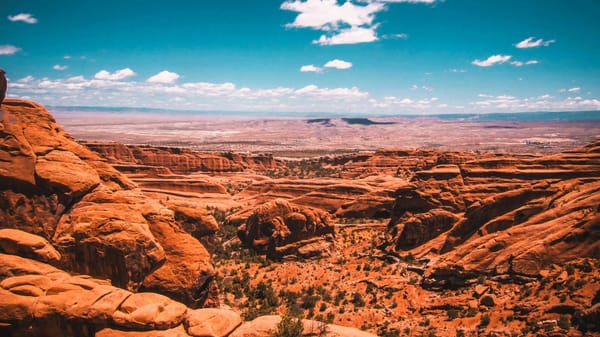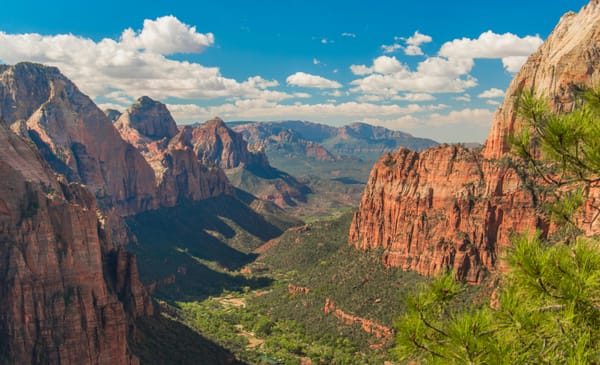Thursday☕️
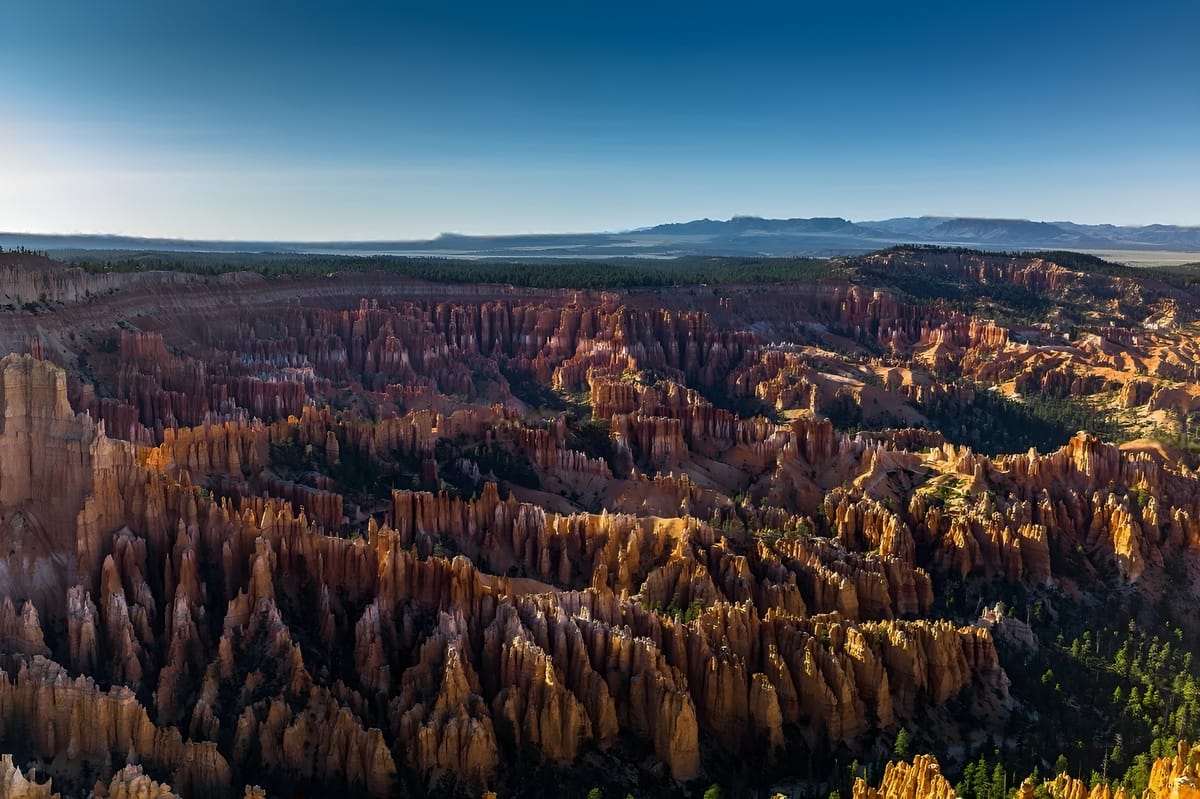
Economics & Markets:
- Yesterday’s U.S. stock market:

- Yesterday’s commodity market:
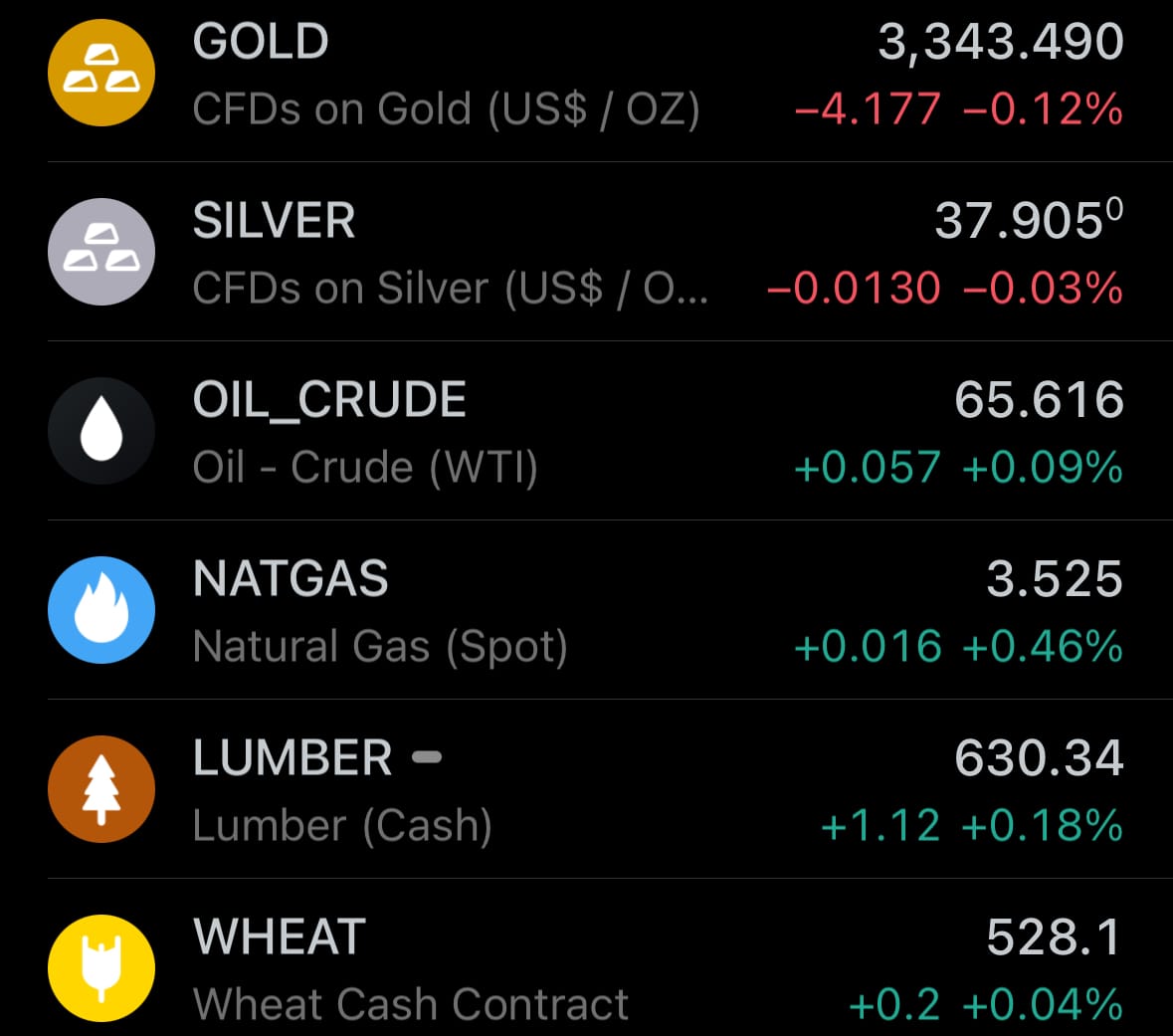
- Yesterday’s crypto market:
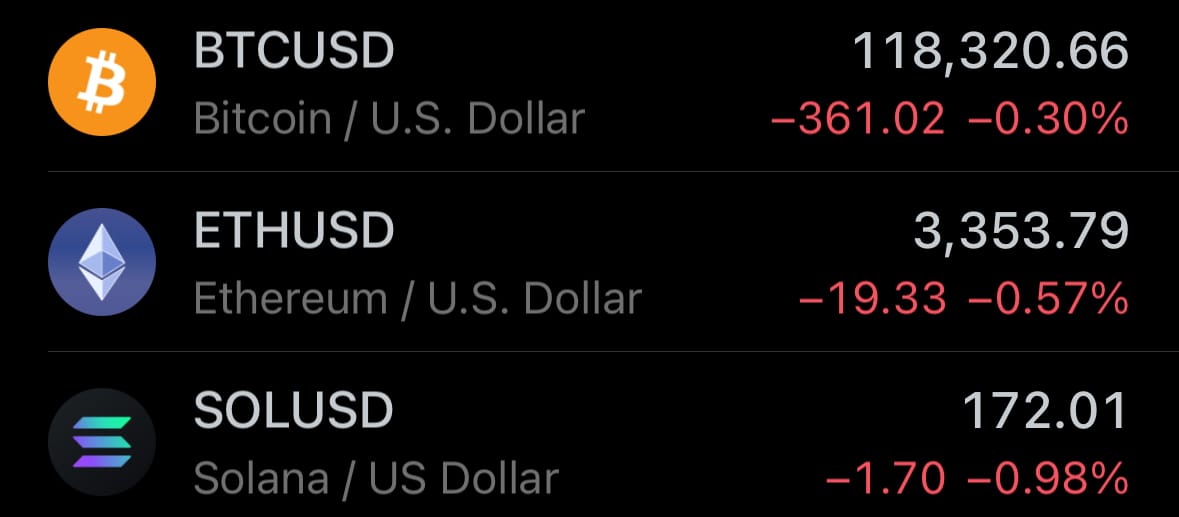
Geopolitics & Military Activity:
- Yesterday, July 16, 2025, Israel conducted airstrikes in Damascus, targeting the Syrian Defense Ministry headquarters and sites near the presidential palace, amid escalating sectarian clashes in southern Syria's Druze-majority Suwayda province. The strikes followed days of violence between Druze militias and Sunni Bedouin tribes, with Syrian government forces intervening, leading to accusations of attacks on Druze communities.

- Israel justified the actions as protective measures for the Druze, with whom it shares ethnic ties, and vowed to continue until Syrian troops withdrew. Syrian officials reported at least three deaths and over 30 injuries, condemning the strikes as aggression aimed at destabilizing the region. By evening, a ceasefire was brokered in Suwayda, mediated by local leaders and involving U.S. facilitation, leading to Syrian troop withdrawals and a halt to hostilities. International reactions included U.S. concerns over escalation, Iranian support for Syria's sovereignty, and mixed public sentiment on platforms like X.
Environment & Weather:
- Yesterday, July 16, 2025, a 7.3 magnitude earthquake struck off the coast of Alaska, centered about 54 miles south of Sand Point on Popof Island in the Aleutian Chain, at a depth of roughly 12 miles. The quake, resulting from strike-slip faulting near the Pacific-North America plate subduction zone, was felt widely across the Alaska Peninsula and southern regions, with reports of items falling from shelves but no major structural damage or injuries initially noted. Authorities responded swiftly, with the U.S. Geological Survey upgrading the initial 7.2 magnitude assessment, and sirens activating in areas like Kodiak Island to prompt evacuations to higher ground. Emergency shelters opened, and the U.S. Coast Guard readied for potential aid, highlighting the region's high seismic activity where four out of five U.S. earthquakes occur.
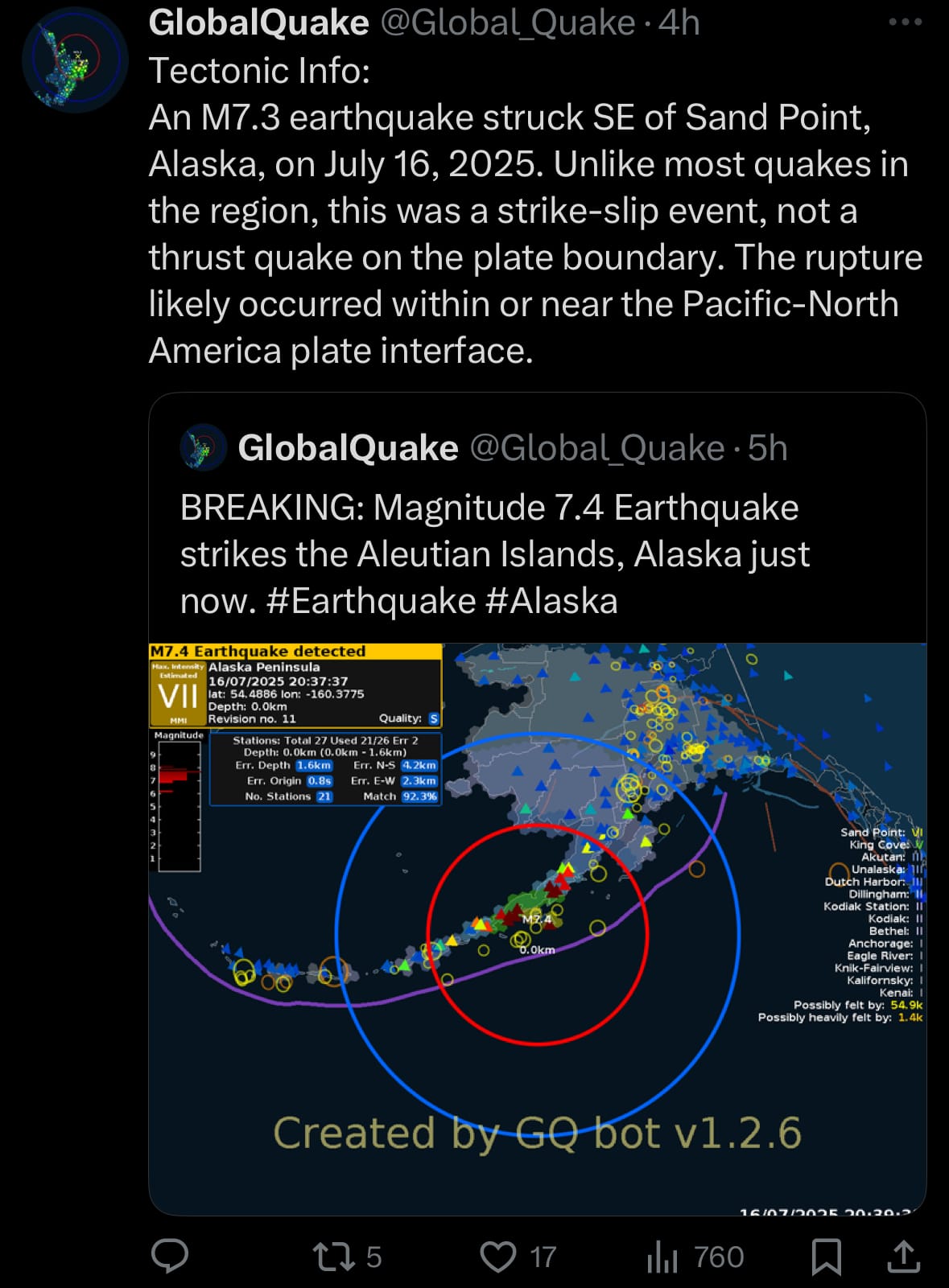
- The event triggered a tsunami warning from the National Tsunami Warning Center for a 700-mile coastal stretch from Kennedy Entrance to Unimak Pass, encompassing communities such as Sand Point, Cold Bay, Chignik, and Kodiak, due to risks of inundation and dangerous currents. A minor tsunami was detected with a 0.2-foot water rise in Sand Point, but the warning was downgraded to an advisory within an hour and fully cancelled by around 2:43 p.m. AKDT after data confirmed no ongoing threat, though minor sea level changes might persist. At least 20 aftershocks followed, including five over magnitude 4.0, with experts anticipating continued activity in this historically volatile zone.
Space:
- Yesterday, July 16, 2025, SpaceX successfully launched the KF-01 (Kuiper Falcon-01) mission, deploying a payload of 24 satellites as part of Amazon's Project Kuiper, an ambitious initiative to create a constellation of over 3,200 low-Earth orbit (LEO) satellites for global broadband internet access. The launch occurred at 2:30 a.m. EDT (0630 UTC) from Space Launch Complex 40 (SLC-40) at Cape Canaveral Space Force Station in Florida, marking SpaceX's 90th orbital mission of the year and the first of three contracted Falcon 9 flights for Amazon's project. The Falcon 9 rocket first-stage booster B1096 landed on the droneship "A Shortfall of Gravitas" in the Atlantic Ocean, while the satellites were released into an initial 465-kilometer orbit about 56 minutes post-liftoff, set to raise to their operational 630-kilometer altitude.
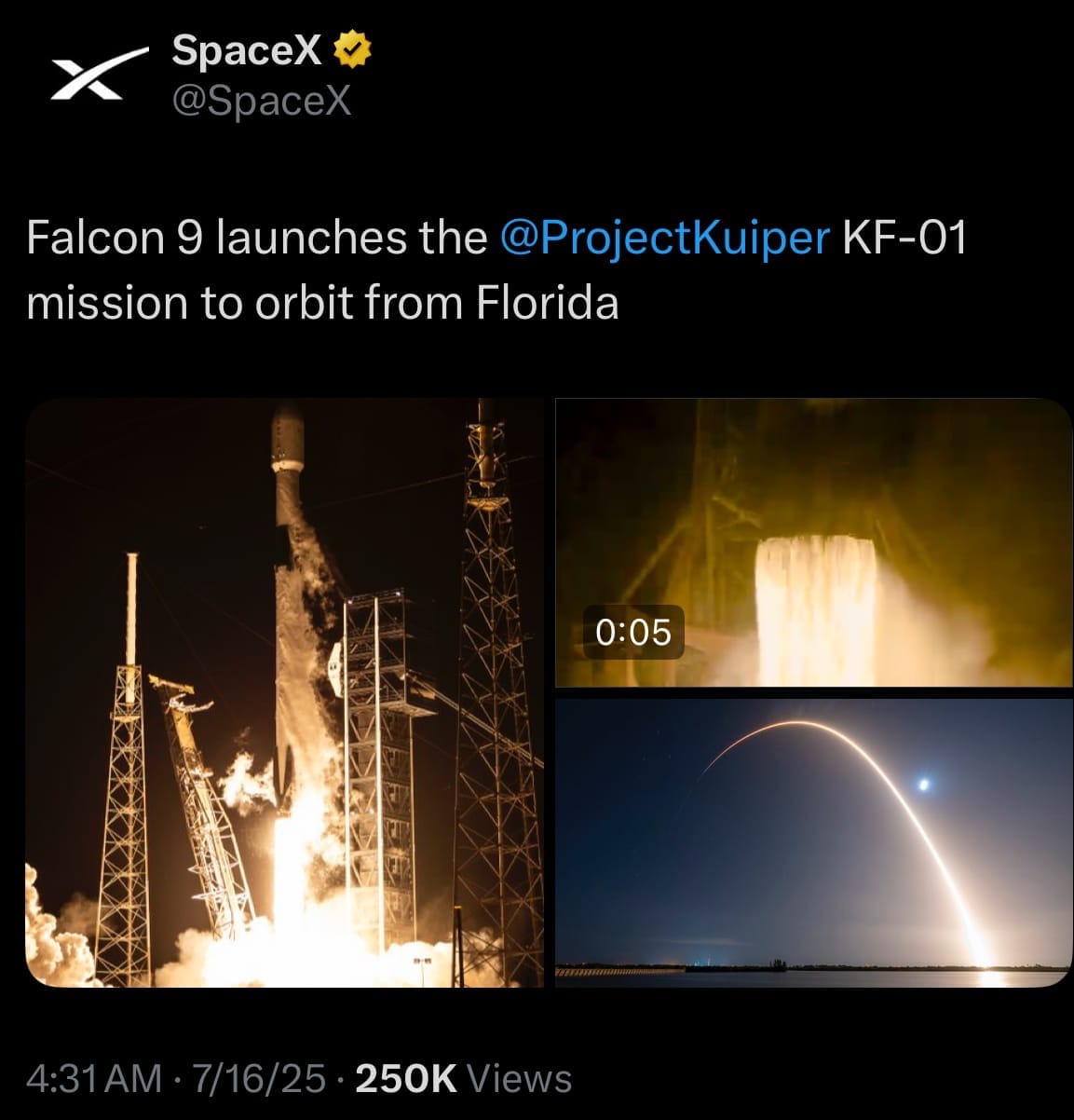
- Project Kuiper aims to provide high-speed, low-latency connectivity to underserved areas worldwide, competing directly with SpaceX's Starlink, which already boasts nearly 8,000 satellites. Despite the rivalry, Amazon turned to SpaceX for launches due to regulatory deadlines from the FCC, requiring half the constellation (1,618 satellites) deployed by July 2026. This mission brings Kuiper's on-orbit total to 78 satellites following prior Atlas V deployments, advancing toward beta testing later in 2025 and highlighting pragmatic collaborations in the commercial space sector amid debates on orbital congestion.
Statistic:
- Largest assets on Earth by market capitalization:
- GOLD: $22.549T
- 🇺🇸 NVIDIA: $4.179T
- 🇺🇸 Microsoft: $3.758T
- 🇺🇸 Apple: $3.138T
- 🇺🇸 Amazon: $2.369T
- Bitcoin: $2.362T
- 🇺🇸 Alphabet (Google): $2.222T
- SILVER: $2.147T
- 🇺🇸 Meta Platforms: $1.767T
- 🇸🇦 Saudi Aramco: $1.605T
- 🇺🇸 Broadcom: $1.320T
- 🇹🇼 TSMC: $1.232T
- 🇺🇸 Tesla: $1.036T
- 🇺🇸 Berkshire Hathaway: $1.016T
- 🇺🇸 JPMorgan Chase: $785.91B
- 🇺🇸 Walmart: $759.33B
- 🇺🇸 Eli Lilly: $709.03B
- 🇺🇸 Visa: $683.52B
- 🇺🇸 Oracle: $677.77B
- 🇨🇳 Tencent: $601.13B
- SPY: $572.89B
- 🇺🇸 Netflix: $532.09B
- 🇺🇸 Mastercard: $504.45B
- 🇺🇸 Exxon Mobil: $483.67B
- 🇺🇸 Costco: $421.91B
- Ethereum: $407.43B
- 🇺🇸 Johnson & Johnson: $396.47B
- 🇨🇳 ICBC: $362.04B
- Platinum: $360.82B
- 🇺🇸 Procter & Gamble: $360.42B
History:
- The history of the internet can be understood through its layered structure: the surface web, deep web, and dark web, each evolving from shared origins but diverging in accessibility, purpose, and scale. The surface web, often called the public or visible web, traces its roots to the 1960s with the U.S. Department of Defense's ARPANET project, which aimed to create resilient networked communication. This foundation expanded in the 1980s with TCP/IP protocols enabling global connectivity, and exploded in 1989 when Tim Berners-Lee invented the World Wide Web at CERN, introducing hypertext and browsers for intuitive access. Representing only about 4-10% of the internet, the surface web encompasses indexed, publicly searchable content like websites, social media, and e-commerce platforms accessible via standard search engines. In contrast, the deep web emerged as a byproduct of this growth, coined in 2001 by Michael K. Bergman to describe the vast unindexed portions—estimated at 90-96% of the web—requiring authentication, such as private databases, email inboxes, and subscription services. Its history aligns with early private networks in the 1970s-1980s for secure data, growing exponentially to include online banking and academic resources by the 1990s-2000s. The dark web, a small intentional subset of the deep web (around 0.01-0.1%), began in the late 1990s with U.S. Naval Research Laboratory's onion routing for anonymous communications, leading to Freenet in 2000 and Tor's public release in 2002. Unlike the surface web's open visibility and the deep web's gated but benign utility, the dark web relies on overlay networks for encryption and anonymity, fostering both illicit activities and privacy protections.
- As these layers matured into the 2010s and beyond, they intertwined amid technological advancements and rising threats, shaping the internet up to 2025. The surface web commercialized rapidly in the 1990s with ISPs and giants like Amazon (1994) and Google (1998), evolving through social media in the 2000s (e.g., Facebook in 2004) and cloud computing in the 2010s, reaching over 200 zettabytes of data by 2025 with AI-driven personalization, privacy regulations, and trends like headless CMS amid escalating misinformation. The deep web ballooned with big data and secure repositories, facing vulnerabilities like the 2017 Equifax breach, and by 2024-2025 saw a 25% surge in ransomware and increased malware varieties (from 349 in 2023 to 384 in 2024), emphasizing its role in safeguarding sensitive information while vulnerable to leaks. Meanwhile, the dark web gained notoriety in the 2010s with marketplaces like Silk Road (2011-2013) and AlphaBay (shut down 2017), followed by takedowns such as Hydra in 2022 and LockBit in 2024, yet persisted with a 53% rise in ransomware sites and AI-powered attacks on platforms like Abacus and STYX by 2025. Credit card compromises rose 20%, alongside advancements in encryption, international regulations, and tools like Torch and Ahmia search engines, highlighting its dual nature as an anonymized extension of the broader internet—amplifying freedoms and risks while operating on the same underlying protocols as the surface and deep webs.
Image of the day:
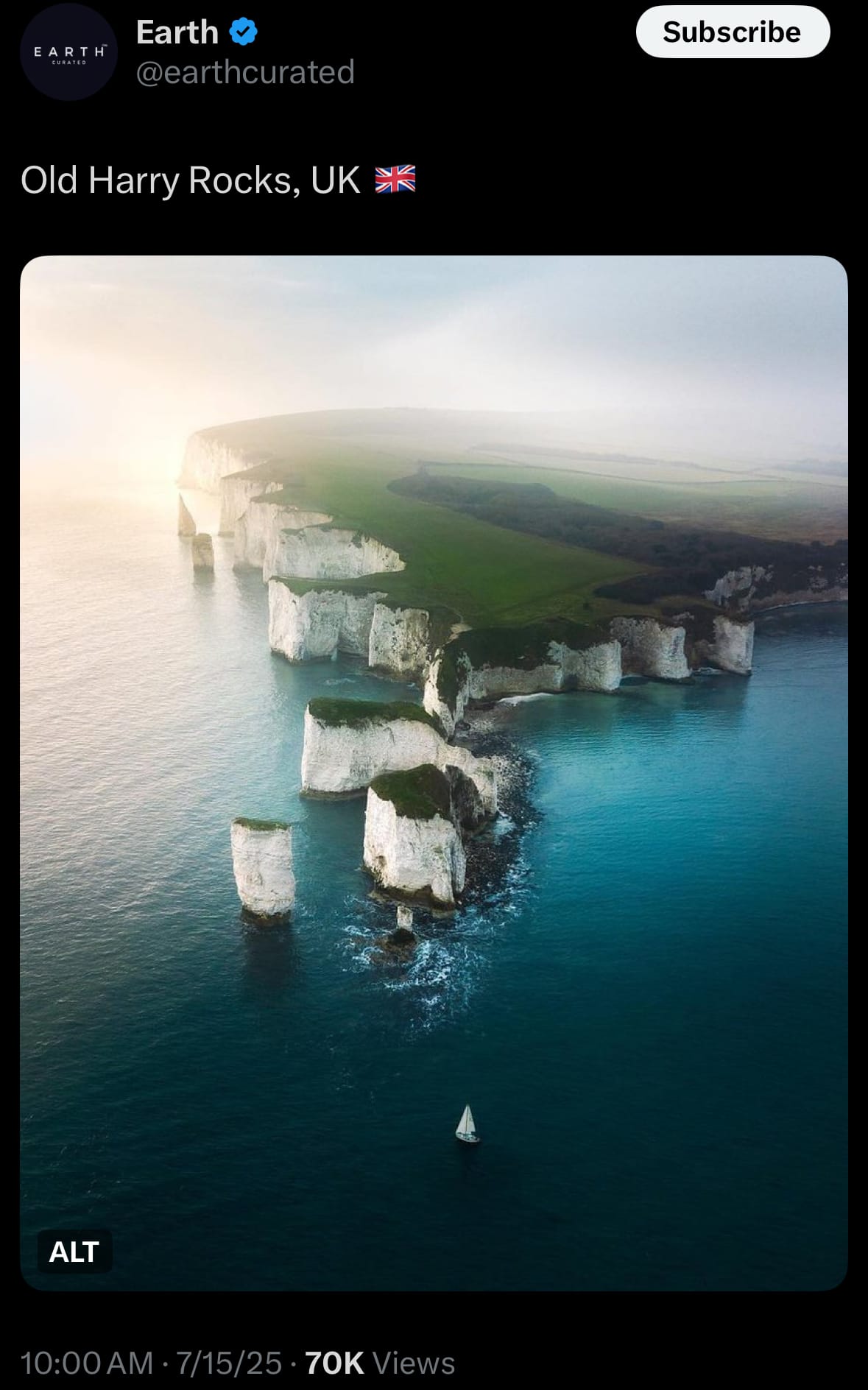
Thanks for reading!
Earth is complicated, we make it simple.
Click image to view the Earth Intelligence System:
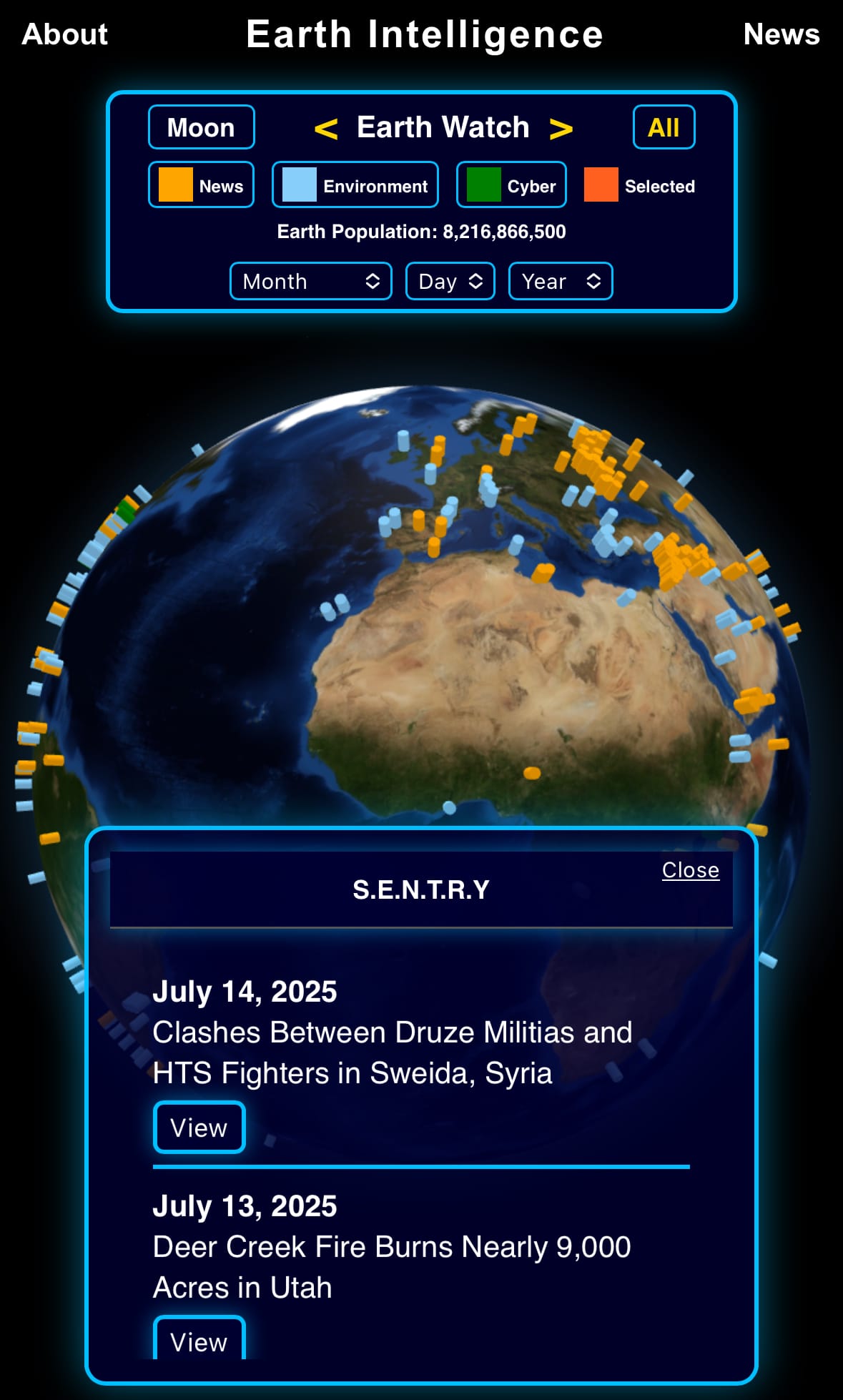


Support/Suggestions Email:
earthintelligence@earthintel.news

